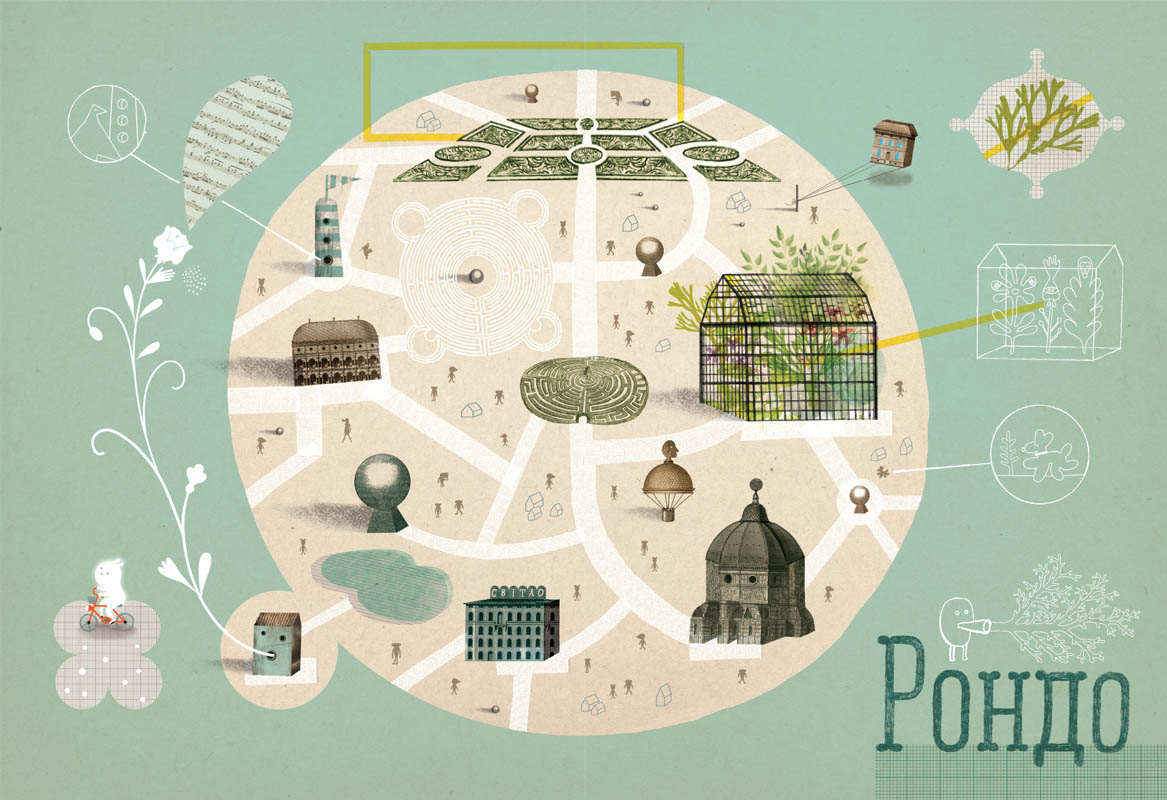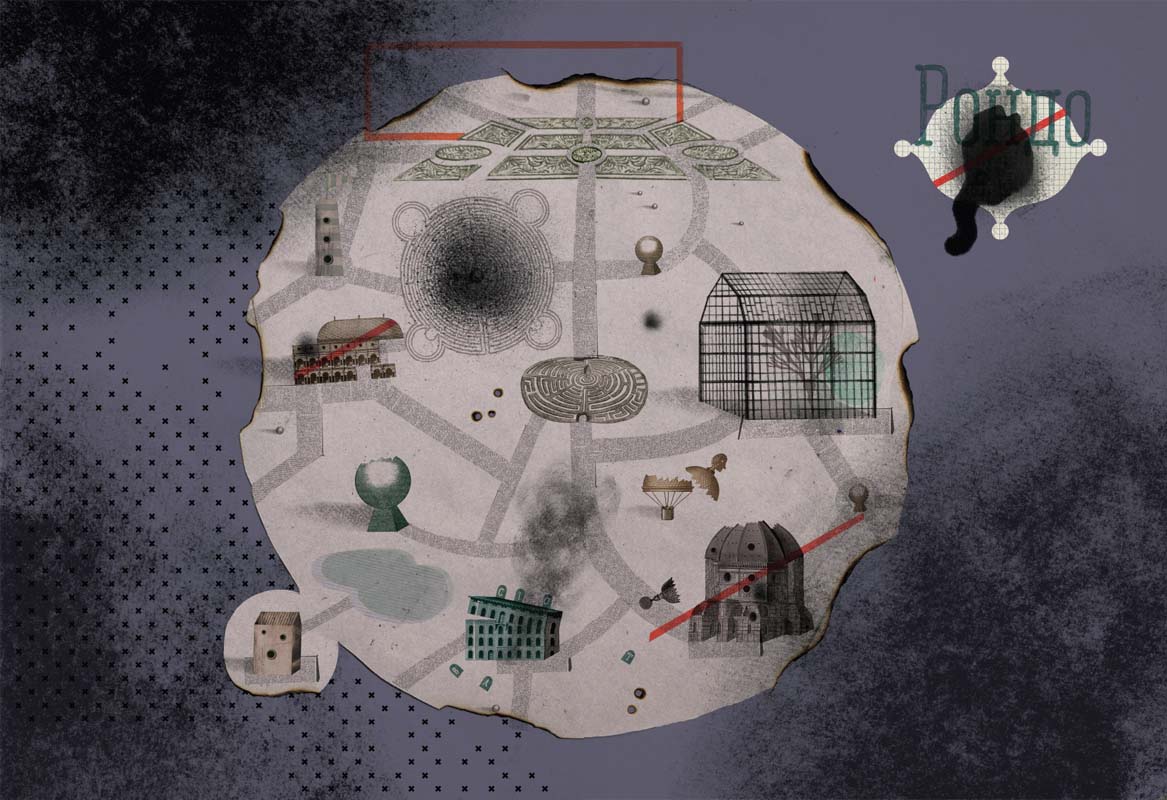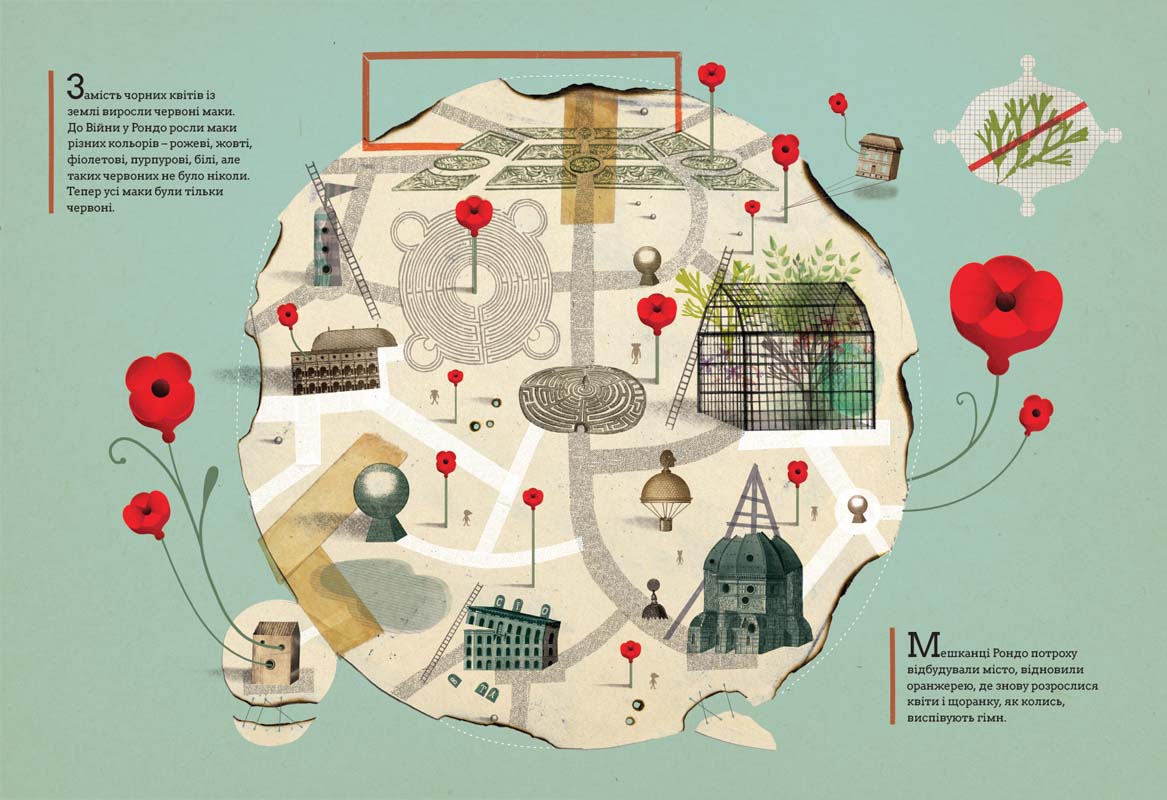Oksana Lushchevska: “Rondo Concerns Everyone”

Back in March of this year (here), Oksana Lushchevska, a PhD student in Reading, Writing, Children’s Literature, and Digital Literacy in the Department of Language and Literacy Education at The University of Georgia, visited 7-Imp to contribute a guest post on contemporary Ukrainian children’s literature. She’s back again today to talk about a recent winner at the Bologna Children’s Book Fair.
Romana Romanyshyn’s and Andriy Lesiv’s The War that Changed Rondo was given a Special Mention in the category of New Horizons. She’s here to tell us about the book, share some thoughts from the creators, and share some art from it as well. I thank her for her contribution!
* * *
Oksana: In this post, I would like to feature The War that Changed Rondo (2015), a picturebook created by Romana Romanyshyn and Andriy Lesiv and published by the Old Lion Publishing House, Ukraine. This picturebook was listed in a section of “Special Mentions” of the Bologna New Horizons Award, 2015. Since it was originally published in Ukraine and successfully reached the global community at the Bologna Children’s Book Fair in March, the picturebook also immediately crossed geographical borders right after the Fair. The War that Changed Rondo will soon be published in Slovakia by OZ BRAK Publishing House. It is my hope that this picturebook will be translated into many languages and will be added to the international body of picturebooks that stimulate fruitful dialogues about our world-mindedness, global awareness, and global interconnectedness.

The War that Changed Rondo addresses the complex and devastating issues of war. It represents both a valuable artistic creation and a response to the current events in Ukraine. It narrates a story of three friends—Danko, Star, and Fabian—who live peacefully in the small town of Rondo. They have their work and hobbies that always keep them busy — until the war comes. The three friends have never experienced war before, so they are unsure how to act. In the hopes of stopping the war, they talk to it and fight it, but it’s all in vain. Ultimately, they discover an effective deterrent against the darkness of war — the power of light. With the help of all the residents of Rondo, Danko, Star, and Fabian build a huge light machine that disperses the darkness and stops the war:
“So, to stop the War, it was necessary to build a huge machine of Light that would destroy the darkness and save the singing flowers!
The three friends immediately began to work. Other residents started coming to help them and soon the whole central square looked like a busy anthill. Everyone united for the common cause and did something they were best at. The town worked like well-tuned clockwork.”
[The above excerpt was translated by Oksana Lushchevska and edited by Oksana Lutsyshyna and Michelle Falter.]
Literacy educators and literary scholars agree that it is tough to read about and discuss the topic of war with children (Crawford & Roberts, 2009; Kidd, 2005). Therefore, during tragic times, books often become a conduit for communication. Picturebooks offer a possibility for focusing on sophisticated and sensitive messages through their verbal and visual texts. These two narratives capture the complexities with more nuances and allow educators, adult mediators, and children to develop both coping skills and visual literacy (Crawford & Roberts, 2009). Consequently, the books of high literary quality are in high demand.

While readers need to find a starting point for their discussion of the books, authors and illustrators also need to find a so-called departure point for creating the book. This process is challenging and often involves multiple considerations and reconsiderations, especially while working on the books that offer deep and wide glimpses of turmoil and horrific events. To learn more about challenges on the way to creating The War that Changed Rondo, I asked the authors of the book to share some steps from their process and share what this particular picturebook means to them:
“One of the most difficult aspects was to create the appearance of the main characters. We definitely did not want them to look like humans – it is hard to choose some particular look, since today there are so many real, not mythical, heroes who live beside us and fight for us. Thus, we decided to make our characters creatures comprised of fragile materials, which highlighted the vulnerability of those touched by war in visual images.
The award at the Bologna Children’s Book fair for two years acts as a signal for us that we are moving in the right direction. Among other things, such awards provide a lot of new contacts and create new opportunities for the book to be published in other countries and languages. In part due to such events as Bologna Children’s Book Fair, the Ukrainian children’s book may create its own ‘continent’ on the literary map of the world. There is the need for consistent participation and initiative, though.”
— Romana Romanyshyn & Andriy Lesiv

Additionally, I learned that Romanyshyn and Lesiv often meet with kids in Ukraine to talk about The War that Changed Rondo, so I asked them to share some of their observations about children’s responses:
“To be honest, we are pleasantly surprised by the sincere and positive reaction of children on our book. The children warmly accept the main characters, empathize [with] them, understanding that Rondo is a kind of prototype of their own towns as well. We are receiving a lot of letters and drawings from children all over Ukraine, even from the children living in front-line towns. We know of many touching stories of children reading our book. Recently, a father in one of our friend’s families was mobilized into Armed Forces and his little son explained it to himself that ‘Rondo concerns everyone …’”
— Romana Romanyshyn & Andriy Lesiv
In summary, The War that Changed Rondo not only heightens readers’ awareness about Ukraine and the Ukrainians, but it provides a strong basis for setting up a dialogue between readers about the devastating consequences of war in general. The questions that this picturebook might help to raise are: How do people live during times of war? What do their daily routines look like? What are the major consequences of war for people? What are their inner and outer wounds? The War that Changed Rondo reflects the ambiguity of war and is definitely a tribute to peace. It is a masterfully crafted international picturebook that might significantly widen the horizons and potentially influence reading communities of many geographical areas, and I am hopeful that it will.
Коментарі
Щоб залишити коментар, необхідно